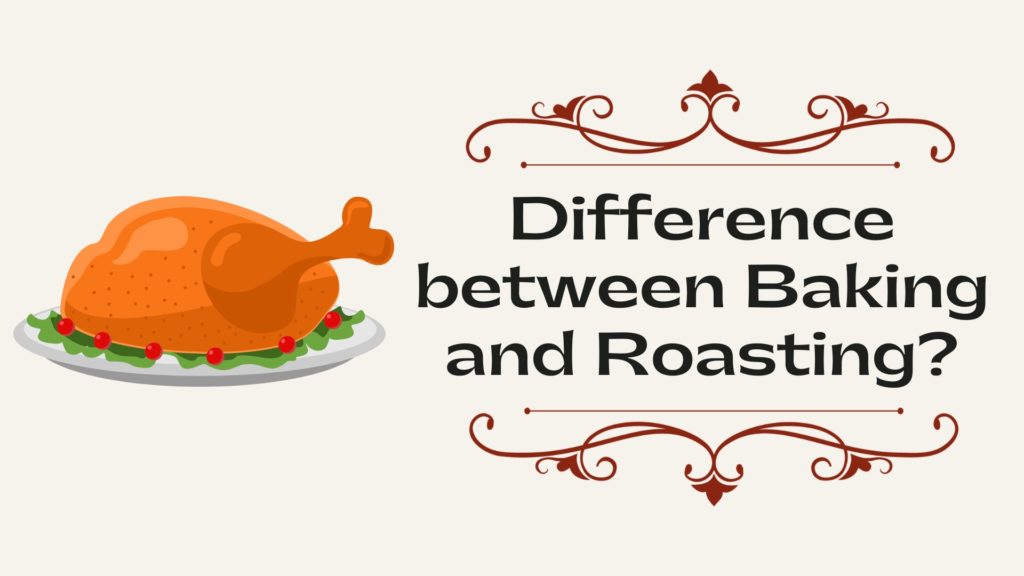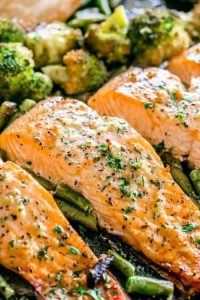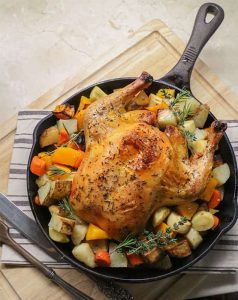
Some of the most common terms in the cooking world is baking and roasting. Wait, are they similar? Maybe you have heard someone using the terms interchangeably, but that doesn’t mean that they are the same. There are some dishes you can bake or roast, for instances, potatoes. Some you can only bake and not roast like cakes. Others you can roast but can’t bake, such as meat. To avoid all this confusion, let’s define the terms.
What Is Baking?

It’s a cooking technique that ensures that you don’t expose your food to open flames. In most cases, you bake in an enclosed space using dry heat. You can either use an oven or a hot surface. When baking, you will have to combine several ingredients first. In the end, you will obtain a solid structure. An example of food you need to bake is cake and bread.
What’s roasting?

On the other hand, roasting involves exposing your food to open flames. You can also use indirect heat and ensure that the hot, dry air surrounds your dish to cook it evenly. Once you are through, you will get a flavored dish that is crispy and caramelized. Note that the foods you roast are solid. They include meat and vegetables.
Here is the difference between roasting vs. baking:
Food Structure
You already have a rough idea of what roasting and baking entails. The next question would be how to identify the category of food that requires baking or roasting. The difference is simple. Think of a cake, what are some of the ingredients of a cake? Apart from floor and eggs, you require sugar, milk, cornstarch, among other ingredients. Note that this food is not a whole structure. The whole intention of baking is to combine your ingredients into solid food.
Think of something like baked fish. To get one uniform dish, you will have to stuff your fish with other ingredients like the vegetables before baking. In short, the food that requires baking is not in its whole structure.
Unlike baking, the food that requires roasting should be in their whole structure. Think of meat, it’s already complete, and you don’t need adding other ingredients to make it a whole structure. It’s the same case with vegetables. Roasting caramelize your food and gives it a good flavor.
Fat Content
Since you have to expose your food to open fire, you don’t want to end up with either overcooked or burnt food. To avoid that, first, brush some butter/oil around your food, then expose it to the heat. Keep on checking to prevent overcooking. The food gets a nice brownish and crispy coating.
However, while baking, you are not exposing the food to the open fire. There is no need to add fat. Its internal fat ensures that your food doesn’t dry out. By the time the food is ready, it will still have an excellent moisture level.
The Temperature
Temperature is a vital consideration when highlighting the differences. Remember, roasting requires a high temperature compared to baking. So if you are using an oven, ensure that the temperature when roasting is 400 degrees F. You may need to regulate the heat when making some dishes like chicken breast to avoid overcooking. The high temperature ensures that your food gets a flavorful brown crust.
Baking doesn’t require a high temperature than roasting. Consider using not more than 375 degrees F, depending on the type of food you are baking.
Exposure To Heat
As indicated earlier, roasting requires hot, dry heat. Many people roast the food using direct flames. If you don’t want to expose the food to an open flame, you can use an oven. Baking requires dry, hot air, too, but should never be under open flames. You don’t have to cover the food when roasting. In most cases, when baking, you require covering the dish.
Results
By now, you are already interested in the results. How will the roasted and baked dishes look like? The skin of your roasted dish is brownish and crispy. If you cut the dish into two, its middle is soft, but it’s not very tender.
When baking, you combine several ingredients. The result will be a solid uniform structure. If you try to trace any of the ingredients you added, you will notice that you can’t see or separate them. Their taste is also different though both are yummy.
Exceptions
Some foods like potatoes are in their whole structure, yet you can bake or even roast them. You must peel them first if you decide to roast them. You can brush them with some fat and other spices if you wish. You can go ahead and expose them to open flames.
No need to peel their skin if you intend to bake them. A little water and salt add potatoes more flavor. The results of both roasted and baked potatoes are sweet. But note that their calories are different since the roasted one has more. If you touch the middle, the roasted one is softer.
Some ovens have an option of baking and roasting. What happens if you don’t have that option? The temperature setting will help you. There are some foods you can bake at a temperature of 400, and they will still be okay. Again in most cases, when baking, people use enclosed spaces. It is not always the case since you can bake in an area that is not enclosed and get excellent results.
Conclusion
Knowing the difference between baking and roasting is vital. It makes your kitchen work more comfortable and helps you prepare delicious dishes. Some of the main differences include Food structure, temperature, and fat content, among others. Roasting requires high temperature than baking. The resulting output is also different. In baking process, ingredients combine and make a whole uniform structure. Roasted food attains a result that is crispy and flavored. There are some foods like potatoes that are solid, and you can bake or even roast them.

John DiBella is a graduate of The Culinary Institute of America, a cooking enthuthiast and a writer. When he’s not writing blogs about home kitchenware, he enjoys hiking, camping, sailing and cooking.
